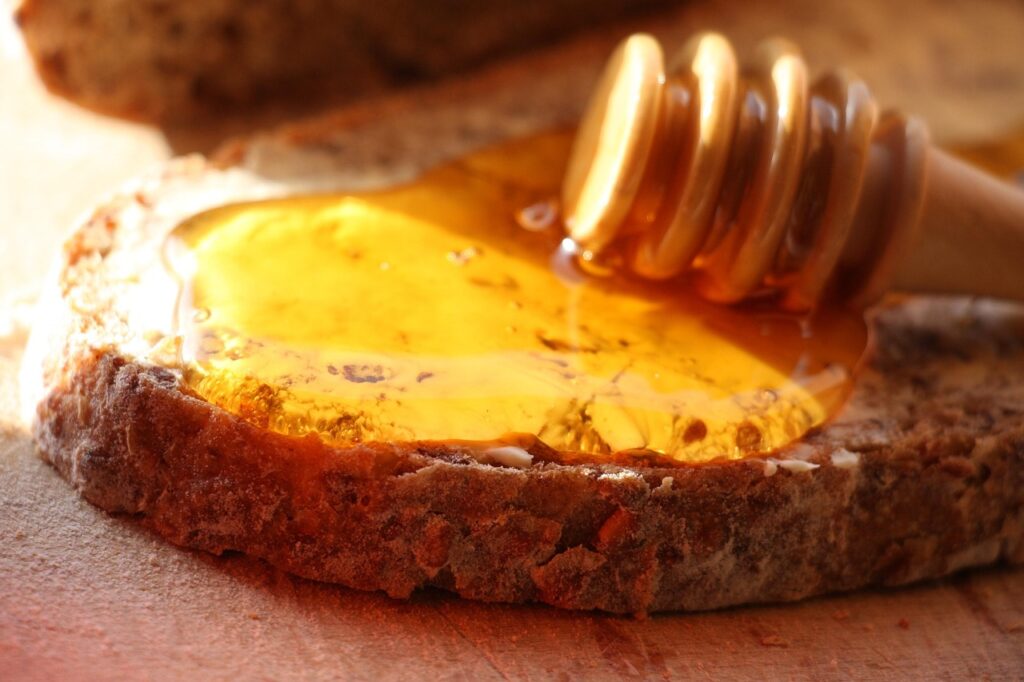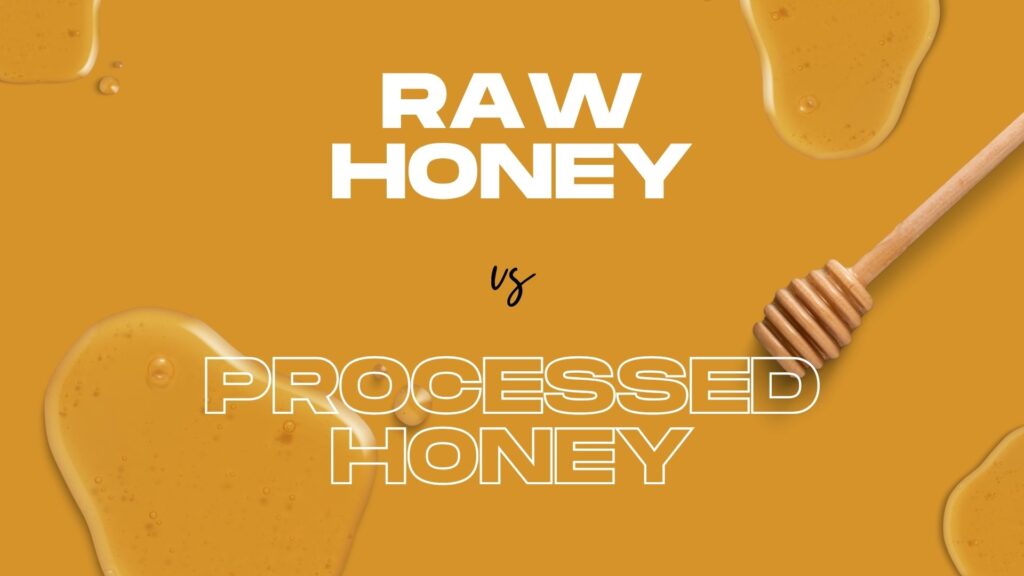Discover the real difference between raw honey and processed honey. Learn which is better for your health and why raw honey is the smarter choice.
When you pick up a jar labeled “honey” at the store, it’s easy to assume it’s all the same. However, there’s a massive difference between raw honey and processed honey, both in terms of health benefits and how they’re produced. In this article, we’ll walk you through the key distinctions so you know exactly what you’re putting in your body — and why raw honey is the superior choice.
What is Raw Honey?
Raw honey is honey that is extracted straight from the hive, strained to remove impurities like beeswax, but never heated or pasteurized. It contains natural enzymes, bee pollen, propolis, and antioxidants – all of which are typically destroyed in processing.
You can read more about Raw Honey in What is Raw Honey? Everything You Need to Know

What is Processed Honey?
Processed honey, on the other hand, is usually heated at high temperatures and ultra-filtered to achieve a clear, uniform appearance. In this process, it loses many of its beneficial nutrients. In some cases, commercial processed honey may even be adulterated with corn syrup or other sweeteners.
Raw Honey vs. Processed Honey: At a Glance
| Feature | Raw Honey | Processed Honey |
|---|---|---|
| Heat-treated | No | Yes |
| Filtered | Lightly strained | Ultra-filtered |
| Contains enzymes | Yes | Often destroyed |
| Antioxidant-rich | Yes | Minimal |
| Natural flavor | Strong and floral | Mild and generic |
| Appearance | Cloudy or crystallized | Clear and smooth |
| Shelf life | Long (can crystallize) | Long (rarely crystallizes) |
Top 10 Differences Between Raw and Processed Honey
- Enzyme Presence: Raw honey contains live enzymes like glucose oxidase that aid digestion. Processed honey lacks these due to heat.
- Antioxidants: Raw honey is rich in antioxidants like phenolic acids and flavonoids. These are stripped away during processing.
- Pollen Content: Raw honey retains local pollen, which may help with allergies. Processing removes these beneficial particles.
- Taste: Raw honey has a distinct floral taste that varies with the flowers bees visit. Processed honey tastes uniform.
- Crystallization: Raw honey crystallizes naturally, a sign of purity. Processed honey stays liquid longer due to heating.
- Color Variations: Raw honey varies in color (from pale gold to amber). Processed honey is typically golden and consistent.
- Medicinal Value: Raw honey supports wound healing and immune health. Processed honey offers minimal therapeutic value.
- Nutrient Retention: Vitamins and minerals in raw honey remain intact. Processing eliminates many nutrients.
- Source Traceability: Raw honey is often sourced locally and can be traced to its floral origin. Processed honey may be blended from global sources.
- Adulteration Risk: Processed honey is more prone to being adulterated with glucose or corn syrup. Raw honey is typically pure.
Why Choose Raw Honey?
Choosing raw honey is about choosing quality, nutrition, and trust. Whether you’re using it for home remedies, skincare, or as a natural sweetener, raw honey gives you the full spectrum of health benefits that processed honey simply can’t offer.

How to Identify Raw Honey in Stores
- Look for labels that say “raw,” “unfiltered,” or “unpasteurized.”
- Choose honey from local or organic farms.
- Avoid clear, syrupy honey that doesn’t crystallize.
- Check for cloudy appearance and thick texture.
FAQs: Raw Honey vs. Processed Honey

- Is raw honey healthier than processed honey?
Yes, raw honey contains more nutrients, enzymes, and antioxidants. - Why is processed honey heated?
To prevent crystallization and make it easier to bottle. - Does raw honey have a shorter shelf life?
No, it lasts indefinitely if stored properly. - Is it safe to eat crystallized honey?
Absolutely. It’s a sign that your honey is raw and pure. - Can I use raw honey in tea?
Yes, but don’t add it to boiling water as heat can destroy enzymes. - Does processed honey cause weight gain?
Processed honey has a higher glycemic index and may spike blood sugar faster. - Is raw honey good for children?
Not for infants under 1 year due to botulism risk; otherwise, yes. - Why does raw honey taste different every time?
Flavors vary based on the flowers visited by bees. - Is raw honey better for skin?
Yes, its antibacterial properties help with acne and dryness. - How can I be sure my honey is raw?
Buy from trusted sources, look for signs like crystallization and cloudiness.
Conclusion
When it comes to your health, raw honey is clearly the better choice. It offers more nutrients, more benefits, and a more authentic connection to nature. Processed honey may look pretty on shelves, but it lacks the life-enhancing elements that make raw honey truly golden.

